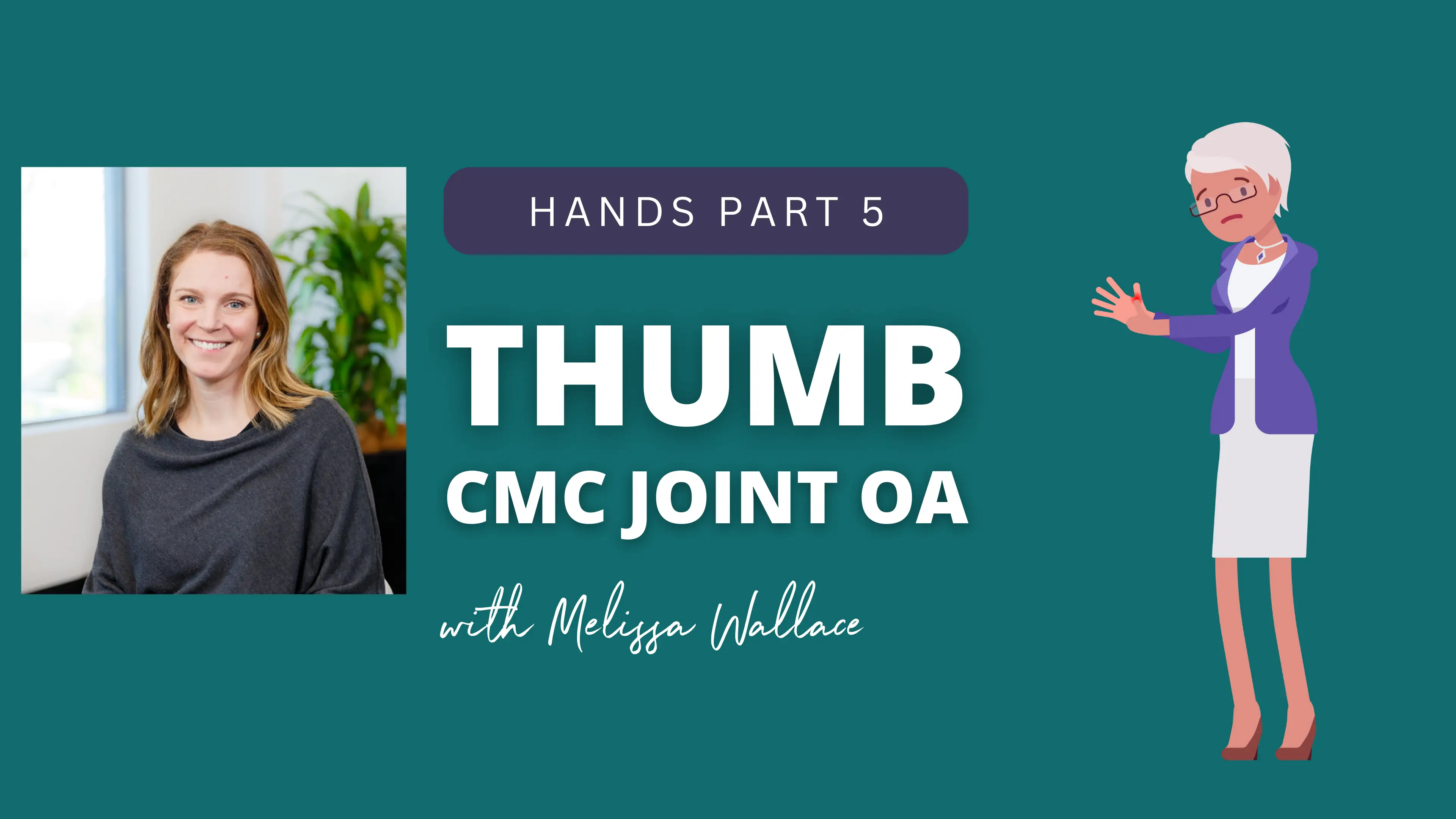Base of thumb pain is common in Physios, health professionals and patients with repetitive or high-load use of the thumb, like gardening, cooking and caregiving. It also occurs frequently in women between 50 and 70 years of age, as hormones cause the stabilising ligaments to become more lax, leading to abnormal joint loading.
How can you accurately identify when your patients (or your) thumb pain is from 1st carpometacarap joint (CMCJ) osteoarthritis (OA) or another cause? What treatments are effective for 1st CMCJ OA?
In “Hands Part 5: 1st CMC Joint OA,” Melissa Wallace (Physiotherapist, Accredited Hand Therapist AHTA, MSc Hand Therapy) will guide you through the essential knowledge and practical skills you need to assess, diagnose, and treat CMCJ OA with confidence.
What you’ll learn:
Anatomy and biomechanics of the thumb: Explore the unique structure and stabilising mechanisms of the CMC joint that make it both functional and prone to osteoarthritis.
Differential diagnosis of thumb pain: Learn to distinguish CMCJ OA from other conditions, such as de Quervain’s tenosynovitis, tendinopathy, or inflammatory arthritis.
Evidence-based treatment strategies: Discover how to use ergonomic advice, orthoses, and targeted exercises to reduce pain, improve joint stability, and restore function.
When to refer: Identify when imaging, pharmacological management, or surgical consultation are needed.
Case study: Managing Heather’s CMC Joint OA
Follow Heather, a retired nurse and active grandmother, as she overcomes debilitating thumb pain through a combination of splinting, load management, and progressive strengthening exercises.
By the end of this presentation, you’ll be equipped to provide tailored, patient-centered care for first CMC joint OA, helping you and your patients improve their thumb pain and function and improve their quality of life.
Click here to improve your assessment & diagnostic skills with a free trial Clinical Edge membership

